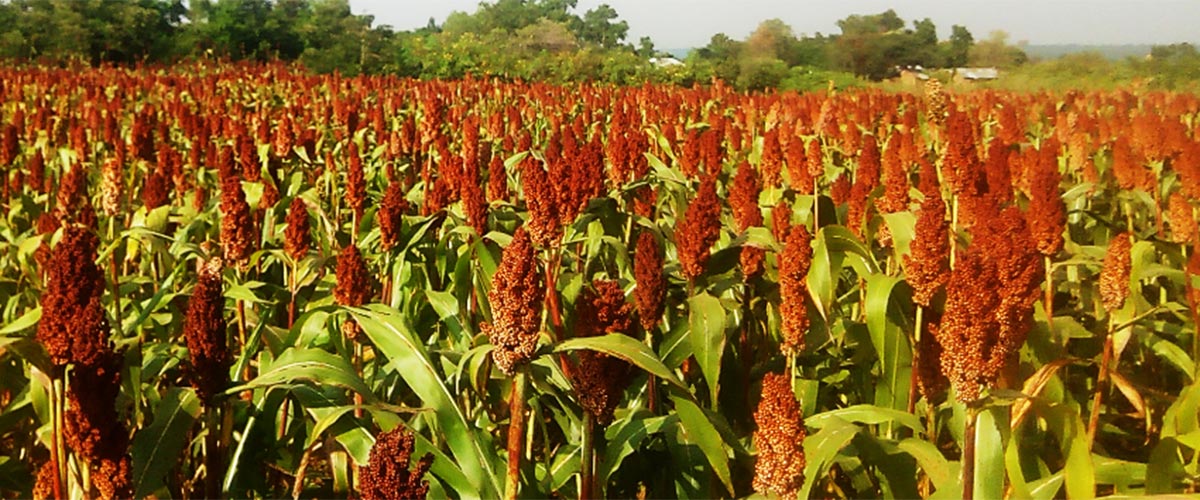
Sorghum Interventions Enhance Livelihoods
Published on:
March 16, 2021
Community of Practice:
In 2017 the CCRP awarded a three-year grant to Enhancing Livelihoods of Smallholder Farmers in Western and Eastern Kenya through Agroecological Intensification with Sorghum-Based Interventions. The project’s objectives were to:
- Upscale and improve access to new, high-yielding multistress-tolerant sorghum cultivars to reach new smallholder farmers.
- Breed sorghum varieties tolerant to covered kernel smut disease (CKSD) and Striga weed.
- Improve soil fertility and water use with appropriate management strategies for enhanced crop yields.
- Diversify diets and reduce malnutrition and hidden hunger through sorghum value addition and poultry interventions.
- Develop the capacity of farmers, postgraduate students, and other stakeholders considering gender dimensions for an enhanced sorghum value chain.
Although the Covid-19 pandemic posed challenges for the project’s final year, several achievements were made in 2020.

This is the agroecological intensification approach. Source: Beatrice Were
New Varieties, New Farmers
Through co-creation and knowledge sharing, a dozen multistress-tolerant varieties were produced for western and eastern Kenya. The effort was a collaboration among farmers; farmer research networks (FRNs); nongovernmental organizations (NGOs), such as Agriculture Improvement Support Services (AGRISS); postgraduate students; and other stakeholders in participatory variety breeding and selection. Farmers’ indigenous knowledge of variety attributes was factored into the varieties’ development.
Through FRNs in western Kenya, the Sorghum-Kenya Research Team (S-KRT) and AGRISS distributed the jointly selected varieties to more than 2,800 new sorghum farmers. After capacity building through targeted training, the newly recruited farmers grew the selected varieties using their own management skills. More new farmers joined each year. Sorghum grain yield in farmers’ fields doubled from 0.9 t/ha before intervention to 2.1–3.6 t/ha, depending on farmer contexts and improved agronomic practices. The new sorghum farmers testify that their food security status improved, as did their cash income from the sale of surplus grains. Consequently, demand for the varieties increased beyond S-KRT’s capacity to supply them. Trained and supported by S-KRT, many farmers ventured into seed production to meet the rising demand by selling to other farmers.
Since 2018, S-KRT and AGRISS have purchased more than 2 tonnes of the new varieties’ seeds from the farmer seed producers to distribute to farmers in other areas. More than 500 additional farmers have purchased small quantities of seed to multiply—from other farmers and even from local markets. Eighty interested farmers or farmer groups in different counties across western and eastern Kenya were chosen to be seed multipliers with the guidance of S-KRT. These farmers currently produce and sell more than 4 tonnes of seeds in the improved sorghum varieties, earning a return on their investment. They report that it’s a struggle to supply enough seed to meet the overwhelming demand.
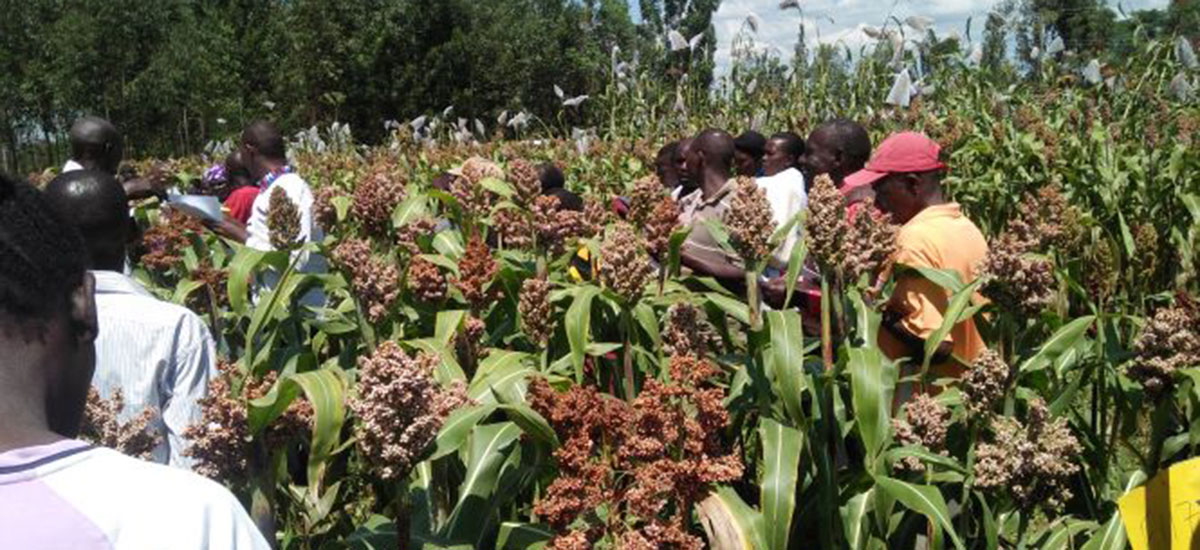
Farmers engage in participatory variety selection in F3/F4 segregating population. Source: Evans Ouma
Disease Resistance
The project created additional plant resilience through recombinant breeding for tolerance to CKSD, an emerging sorghum problem, and Striga, a serious production constraint in the region because of continuous cereal monocropping. Fifty-six recombinant Striga-resistant/CKSD lines were identified and moved to F4/F5 families. In other related crosses, about 166 F3 recombinant single-plant selections were made using participatory breeding. Some of the promising early-generation materials jointly selected with farmers will be finalized and possibly released during the project’s next phase. Additionally, community resilience, especially in the drylands of eastern Kenya, was enhanced through testing and adoption of soil water management and conservation strategies.
Intercropping and Crop-Livestock Integration
The project also enhanced diversity and synergies by promoting cereal-legume intercropping and crop-livestock integration. This helped minimize risks from the vagaries of environment and contributed to a balanced diet and a sustainable environment through nutrient cycling. Farmers were encouraged to grow high-yielding multistress-tolerant varieties of sorghum together with grain legumes, including groundnuts, cowpeas, soybeans, and beans, and also to keep poultry.
Farmers who adopted the crop-livestock practice benefited immensely from livestock by-products, including manure and income-generating eggs. Likewise, farmers who adopted the sorghum-legume intercrops had better economic returns compared with those who practiced monocropping. Intercropping benefits largely depended on the legume species used, farm location, farmer practices, and season. Keeping poultry and feeding it a sorghum-based ration mixed with other local feeds was also beneficial. More farmers have diversified their enterprises through intercropping of sorghum with different legumes and keeping improved indigenous chickens for eggs and meat.
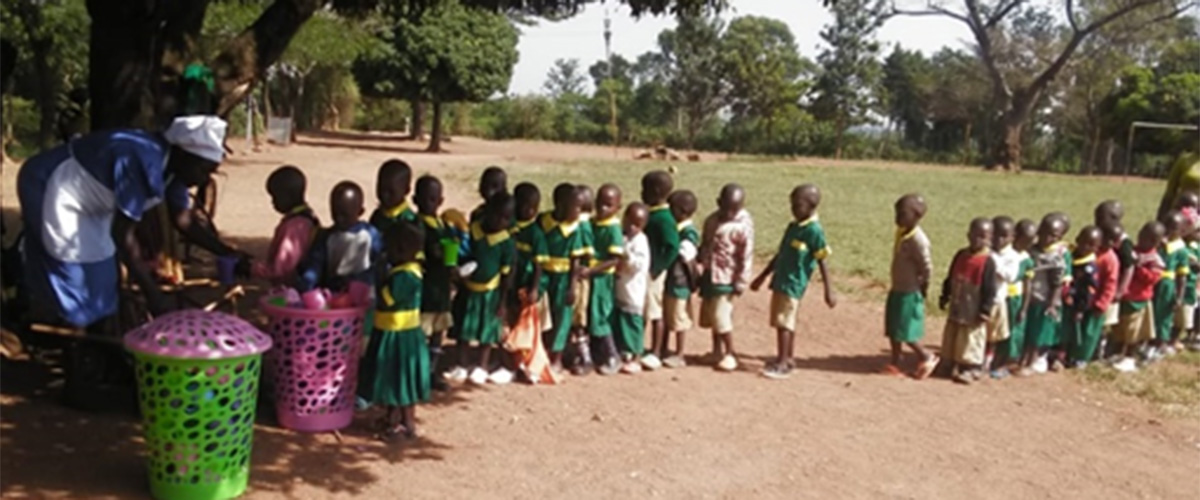
Preschool children participate in the trial of a blended porridge formula. Source: Beatrice Were
Blended Porridge
A notable finding in terms of diversifying diets and value addition was that porridge blended with soybean and maize in certain proportions supports significant weight gain in schoolchildren better than the sole maize porridge provided in some Busia County primary schools. School administrators have been encouraged to make the blend to reduce malnutrition and improve the well-being of young children in school, given that sorghum, maize, and soybean are readily available from local farmers. Awareness campaigns aimed toward farmers and school leaders would help boost adoption of the blended porridge for breakfast.
Educational Outcomes
More than 1,000 farmers and other sorghum stakeholders were trained and/or sensitized on different topics, including sorghum/legume agronomy, crop protection, soil fertility management, seed production, postharvest handling, value addition, and poultry production. Six graduate students supported by the project carried out research relevant to their fields of study. Two have submitted their theses, and the others are finalizing theirs. The capacity building included a good mix of both female and male actors along the sorghum value chain.
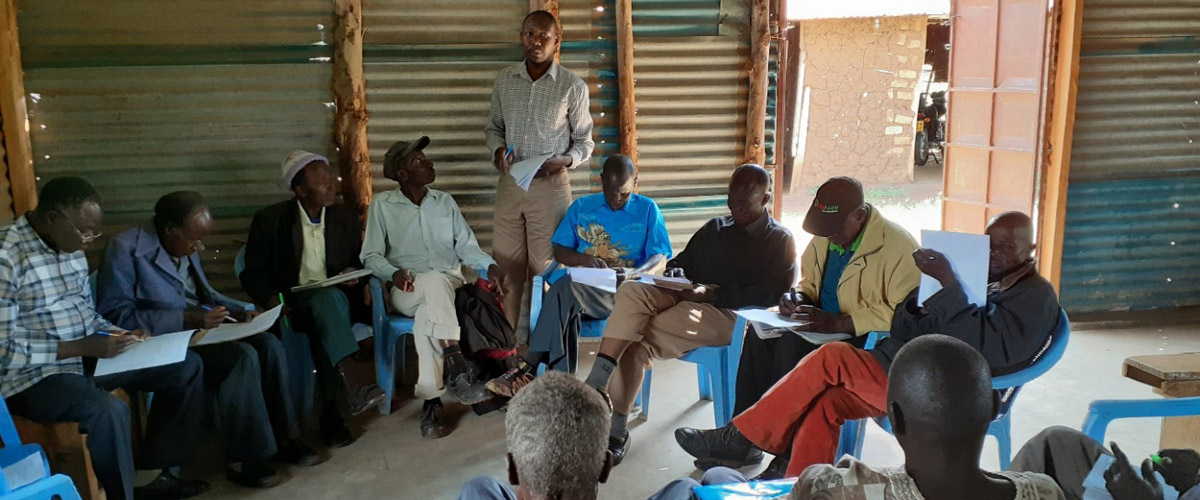
Farmers share knowledge during participatory variety selection of segregating populations. Source: Evans Ouma
Next Phase
S-KRT was awarded a new McKnight-funded project titled Transforming Sorghum-Based Farming Systems in Eastern and Western Kenya through Agroecological Intensification. The new project will promote integrated agroecological principles to transform sorghum farming systems among communities in the country’s semiarid regions. Based on the community context, sorghum provides an important entry point to turn around socioeconomic fortunes using locally available capital—including the natural ecosystem and social, cultural, financial, political, and human resources.
Specifically, the project will increase sorghum productivity by providing new, high-yielding multistress-tolerant lines. Some of the segregating families’ resistance to Striga and CKSD from the previous project will be tested with farmers on-farm using participatory breeding. The hope is to develop and release stable varieties that provide better management options for the two constraints.
The project also intends to improve nutrition in target communities by validating fortified value-added food and feed products, and to increase their use to combat malnutrition and provide affordable alternative poultry feed to farmers. To achieve this, the new project will focus on enhancing agroforestry to intensify crop-tree-livestock integration, bringing synergy within the smallholder farms, reducing land degradation, conserving water, improving tree cover, and increasing the supply of forage, fuelwood, and timber.
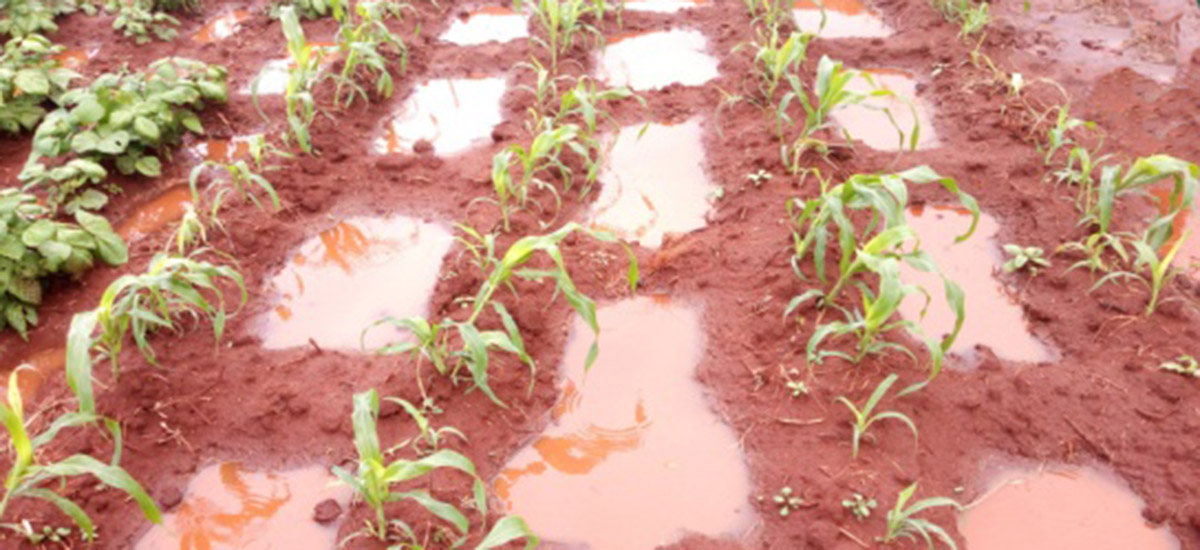
Farmers engage in water conservation in the dryland regions of western Kenya. Source: David Musyimi
Further, the new project will see where sorghum fits on the poultry-legume intercrop enterprise continuum and food culture and nutrition of the small-scale farming communities in the dryland ecosystems of western and eastern Kenya. The project will build the capacity of farmers and other stakeholders to produce, value add, market, and consume sorghum-based technologies and other farm produce for enhanced resilience and improved livelihoods.